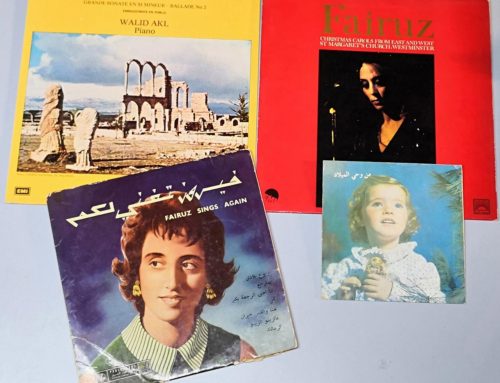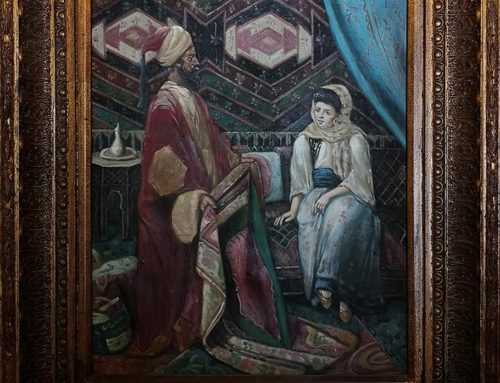William Blake and Kahlil Gibran ‘Poets of Prophetic Vision’ by George Nicolas El-Hage
Author’s Introduction
This Book is a comparative study of two major Romantic poets: William Blake and Kahlil Gibran. The work was originally written as my dissertation for a doctorate in Comparative Literature. Ever since I have published the dissertation in a series of articles and also translated and published selected chapters in Arabic. However, this is the first time that this work appears in book form, published by a cherished institution of higher learning, Notre Dame University, in the land that gave birth of the author of the Prophet.
Although this study was written in 1981, it is still current, relevant, and unique. Its uniqueness and relevance stem from the fact that it remains the only comprehensive comparative study done on Blake and Gibran. While some remarks about Blake’s influence on Gibran can be found scattered in books on the Lebanese-American poet, no other attempt has been made to bring the two authors together in thorough comparison with a detailed analysis of their works.
Many studies have been authored on Gibran since I wrote mine, yet none of them deals specifically with my thesis or updates or challenges my argument. Most of the literature on Gibran has been historical, descriptive or biographical, fundamentally different from the critical, analytical and comparative approach employed in this study. I assert that Gibran owed more to Blake than to any other poet or philosopher and that Blake’s influence on him was the most enduring. In their recent book, ‘Kahlil Gibran: Man and Poet: A New Biography’, Bushrui and Jenkins acknowledge my research and accept my argument. In another recent book by Robin Waterfield, ‘Waterfield, Prophet: The Life and Times of Kahlil Gibran’, the author totally ignores the influence of Blake on Gibran, consequently making his study incomplete and his list of influences certainly lacking.
In addition to asserting Blake’s supreme influence on Gibran, this book also explicitly addresses the influence of the Bible on the writings and lives of both Blake and Gibran. It highlights the effect of Anglo-American Romanticism and the Transcendentalist Movement on the Lebanese poet and traces the temporary, yet powerful, the impact of Nietzsche on Gibran.
This is a study of influences, a journey through the poetry and into the poetics of two powerful artists. It attempts to explore prophetic vision, to address prophecy, to define the function of imagination in relation to nature, and to establish the role of the poet as the supreme visionary and prophet. Although such concepts remain, arguably, valid throughout the ages, nevertheless, when placed within a time frame, these concepts clearly belong to the Romantic Movement. Favorable literary criticism of Romanticism peaked during the early 1970’s and 1980’s which is when the bibliography of this study was compiled. Hence, the bibliography may appear old, but it is not outdated.
In this book, I am not concerned with Comparative Literature as an independent field of research. Rather, I apply comparative tools to trace the comparisons and contrasts in the works of two extremely original and independent individuals who, nevertheless, share a strong spiritual affinity with each other. Though separated by almost a century, they remain strikingly similar in their visions and in the execution of their visions.
There is evidence that Gibran knew some of Blake’s poetry and was familiar with his drawings during his early years in Boston. However, this knowledge of Blake was neither deep nor complete. Kahlil Gibran was reintroduced to William Blake’s poetry and art in Paris, most likely in Auguste Rodin’s studio and by Rodin himself. It was then that Gibran read Blake’s complete works and his biography and carefully studied many reproductions of Blake’s drawings. From that time on, Blake played a special role in Gibran’s life. In Paris, Gibran was called “the twentieth-century Blake.”
Blake’s and Gibran’s reading of the Bible, their rebellion against church corruption, and their sociopolitical visions were very similar. Both men rejected reason in favor of imagination and shared the muse of art and poetry equally. This is not to say that Gibran was a mere copy of Blake but to affirm that in Blake he found the support and confirmation for his own early doctrines, developed before or during reading Blake.
One of their few differences, however, is in their respective concepts of nature. Though not totally different from Blake, Gibran comes closer to other European Romantics and American Transcendentalist whom he read during his long stay in Boston and New York. Gibran shares with Blake the vision on an innocent, rustic world of “pleasant glee,” where “everything that lives is holy.” However, nowhere in Gibran’s writings do we find nature “barren” without a man. Blake refuses the existence of an autonomous nature. He sees external nature as a projection of a fallen man. Gibran treats nature as a living being using the imagery of erotic and maternal love, insisting on personifying nature rather than humanizing it as Blake does. Like Coleridge and Emerson, whom he also read, Gibran projects his feelings and moods onto nature and makes her echo them again.
Another concept that Gibran does not share with Blake is that of reincarnation. According to Gibran, the evolution of the self through reincarnation is the only way to the realization of the Greater Self, a concept which he read in Whitman and in Emerson’s “The Over-Soul.” Blake neither addresses the issue of reincarnation nor alludes to it.
This book is divided into five chapters. In the first chapter, I state my methodology and give a general background on Romanticism and Romantic characteristics of Blake and Gibran. I then move on to show how Gibran was introduced to Blake and to elaborate on what Gibran thought of him.
In the second chapter, I discuss Gibran’s basic concepts up to 1910 – the year of his return to Boston from Paris. Here, I attempt a detailed analysis of Gibran’s early works, comparing and contrasting them to those of Blake and to other major Anglo-American Romantic poets.
In the third chapter, I analyze the writings of Blake and Gibran, comparing their doctrines on poetry, poetic vision, inspiration and prophecy. The chapter concludes with a brief comparison between Gibran’s prophet ALMUSTAFA and Blake’s LOS.
In the fourth chapter, I examine in detail the Romantic views on imagination and nature, concentrating on Gibran’s and Blake’s understanding of both concepts. Here again, I draw comparisons and contrasts to other major Anglo-American poets.
In the fifth and concluding chapter, I deal specifically with the two authors as poets of the Bible, and I try to clear up to controversy regarding Gibran’s response to Nietzsche’s Thus Spoke Zarathustra. Gibran respected Nietzsche and learned from him how to present his ideas in messianic overtones. However, Gibran disagreed with the German philosopher and fully accepted Blake’s concept of Christ. Christ remained Blake’s and Gibran’s idol and hero, the role model after whom they fashioned their lives.
George Nicolas El-Hage
Former Professor of Comparative Literature at the Lebanese University
Currently, Gordon Gray, Jr. Lecturer in Arabic Studies the Department of the Middle East and Asian Languages and Cultures Columbia University, New York






